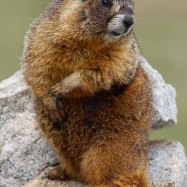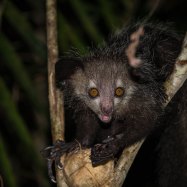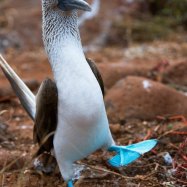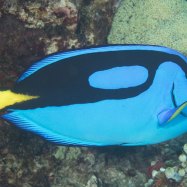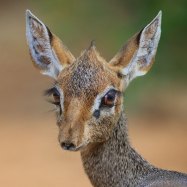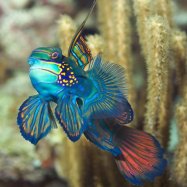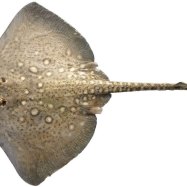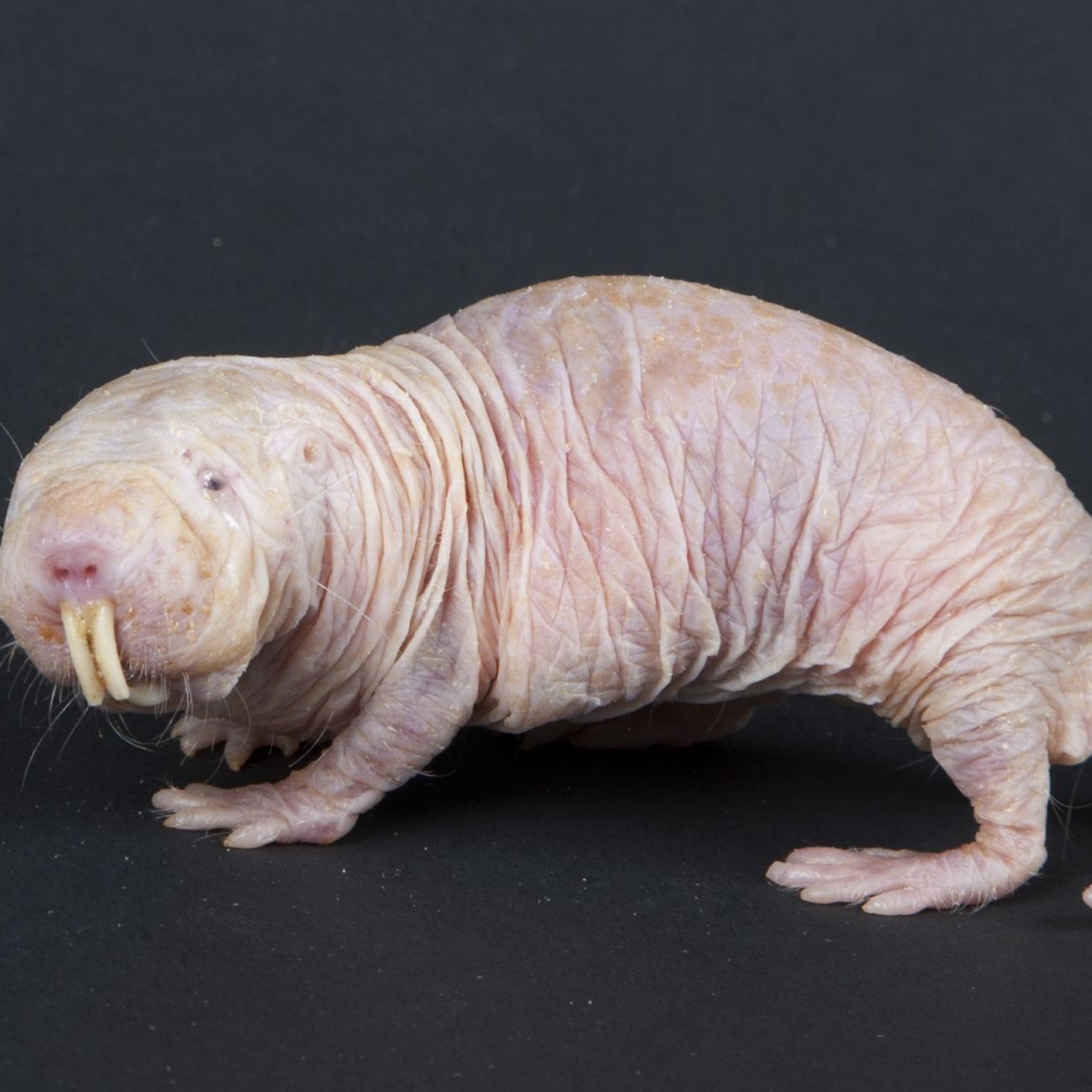
Naked Mole Rat
8-10 cm
The Naked Mole Rat, found in Eastern Africa, is a fascinating creature with its unique features. With a body length of 8-10 cm and a cylindrical body shape, they are a part of the Bathyergidae family. Despite their small size, these animals play a crucial role in their ecosystem. #NakedMoleRat #EasternAfrica #Bathyergidae.
Animal Details Summary:
Common Name: Naked Mole Rat
Kingdom: Animalia
Habitat: Underground burrows
Naked Mole Rats: The Extraordinary Rodents of Eastern Africa
Deep in the underground burrows of Eastern Africa, a fascinating animal resides, often unseen and overlooked by the outside world. Meet the naked mole rat, the intriguing mammal with a unique appearance and adaptable abilities that have helped them thrive in their sub-Saharan African habitat. Despite their low profile, the naked mole rat has recently caught the attention of scientists and researchers, revealing many surprising facts about this extraordinary creature. So, let's dive deep into the world of naked mole rats and discover what makes them stand out in the animal kingdom Naked Mole Rat.The Basics of Naked Mole Rats
Scientifically known as Heterocephalus glaber, the naked mole rat belongs to the kingdom Animalia, phylum Chordata, and class Mammalia. They are a part of the order Rodentia and the family Bathyergidae, and their closest relatives are other African mole-rats. The naked mole rat is commonly known as the "sand puppy" or "bald rat" due to their unique appearance. They have a cylindrical shape, measuring about 8 to 10 cm in length, and have yellowish-brown skin devoid of fur, hence the name "naked."Geographically, these rodents are found in the Eastern part of Africa, namely in Ethiopia, Kenya, and Somalia. They are primarily found in arid regions with extensive underground burrow networks. These networks provide shelter and protection from the harsh climatic conditions on the surface.
The Secrets of Naked Mole Rats
Naked mole rats have many surprising features that make them one of the most unusual creatures of the animal kingdom. Let's delve into some of their unique characteristics and discover what makes them special Naegleria.Adaptability in Extreme Environments
The naked mole rat has impressive abilities to adapt and thrive in harsh and unpredictable environments. As mentioned earlier, they live in large underground burrows, which they dig themselves using their sharp teeth and powerful claws. These burrows can extend up to 9 meters underground, with multiple chambers for different purposes. They are naturally resistant to low oxygen levels, high carbon dioxide, and high humidity, making them well-suited to live underground.
Additionally, they have a remarkable ability to regulate their body temperature, even in extreme conditions. They can tolerate temperature fluctuations between 32 to 35 degrees Celsius, making them one of the most heat-tolerant mammals. This feature helps them survive in the arid and hot regions of Eastern Africa, where temperatures can reach up to 40 degrees Celsius.
Social Structure and Communication
Unlike most mammals that live in large social groups, naked mole rats are eusocial, meaning they live in colonies with a strict social hierarchy. Each colony has a queen and a few males who are the only breeding individuals. The rest of the colony is made up of non-breeding workers, who carry out tasks such as digging, foraging, and caring for the young.
Their communication methods are also unique, as they do not rely on vocalizations like other rodents. Instead, they use a combination of squeaks, chirps, and various postures to communicate with each other. The queen also uses pheromones to communicate her reproductive status to other colony members and maintain her dominance within the colony.
Unusual Dietary Habits
Naked mole rats are herbivores, and they mainly feed on large tubers and roots found in their underground habitat. These rodents have strong jaws and teeth, which they use to chew tough plant material. Interestingly, naked mole rats have the ability to convert fructose to glycogen, allowing them to survive long periods without food. This adaptation comes in handy during periods of food scarcity, which is common in their natural habitat.
A Long and Healthy Life
One of the most remarkable features of naked mole rats is their longevity. They are the longest living rodents, with the longest recorded lifespan being 34 years. In comparison, most small rodents live for only a few years. Scientists have been studying the naked mole rat's longevity to understand their unique aging process. They have discovered their cells have exceptional DNA repair mechanisms that allow them to live longer and avoid age-related diseases.
Significance in Research and Conservation
With their unusual abilities and long lifespan, naked mole rats have caught the attention of scientists and researchers worldwide. They have been studied for their unique traits and adaptations, which can provide insights into human health and aging processes. Additionally, their resistance to cancer has made them a valuable subject for cancer research, as they could hold clues to preventing and treating this disease.In terms of conservation, naked mole rats play a crucial role in maintaining the ecosystem in their natural habitat. They help aerate the soil through their digging activities, which promotes plant growth and nutrient recycling. And as they are considered a keystone species, their absence can have significant consequences on the ecosystem.
Challenges and Threats
Despite their remarkable abilities, naked mole rats are facing growing threats to their survival. Their natural habitat is shrinking due to human activities such as agriculture and urbanization, which is disrupting their underground burrows. The introduction of invasive species such as snakes and birds also poses a threat to their population. Additionally, they are caught and sold as exotic pets, leading to their capture from the wild.In Conclusion
From their extraordinary adaptations to their crucial role in research and conservation, naked mole rats are undeniably intriguing creatures. Scientists and researchers continue to study and learn from these unique rodents, unraveling new and exciting discoveries with each passing day. And while they may not be the most aesthetically pleasing animals, they are certainly making a significant impact on the animal kingdom and, in turn, on human well-being. So, let's appreciate these remarkable creatures and work towards preserving their natural habitat for generations to come.

Naked Mole Rat
Animal Details Naked Mole Rat - Scientific Name: Heterocephalus glaber
- Category: Animals N
- Scientific Name: Heterocephalus glaber
- Common Name: Naked Mole Rat
- Kingdom: Animalia
- Phylum: Chordata
- Class: Mammalia
- Order: Rodentia
- Family: Bathyergidae
- Habitat: Underground burrows
- Feeding Method: Herbivorous
- Geographical Distribution: Sub-Saharan Africa
- Country of Origin: Ethiopia, Kenya, Somalia
- Location: Eastern Africa
- Animal Coloration: Yellowish-brown
- Body Shape: Cylindrical
- Length: 8-10 cm
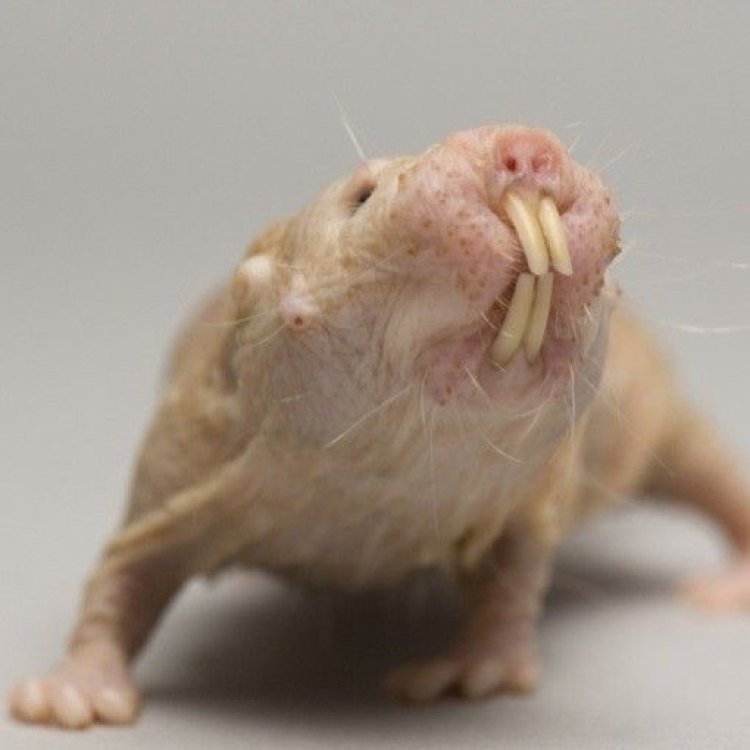
Naked Mole Rat
- Adult Size: 8-10 cm
- Average Lifespan: Up to 32 years
- Reproduction: Eusocial
- Reproductive Behavior: Queen-based reproduction
- Sound or Call: High-pitched squeaks
- Migration Pattern: Non-migratory
- Social Groups: Colonies
- Behavior: Subterranean lifestyle
- Threats: Predators, habitat loss
- Conservation Status: Least Concern
- Impact on Ecosystem: Important ecosystem engineers
- Human Use: Laboratory research
- Distinctive Features: Nearly hairless body, large incisors
- Interesting Facts: Resistant to cancer and pain
- Predator: Snakes, birds of prey
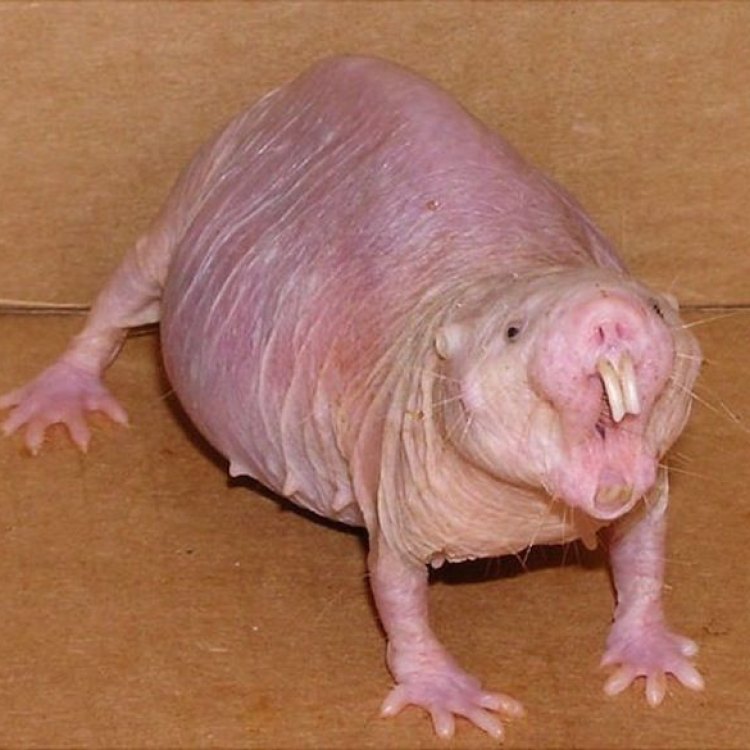
Heterocephalus glaber
The Fascinating World of the Naked Mole Rat: Unique Features and Incredible Adaptations
Deep underground in the dry, hot regions of East Africa, there lives a creature unlike any other. It burrows through the earth, creating intricate tunnels and chambers, all while living in large, complex colonies. This extraordinary creature is the naked mole rat, a species that has captured the attention and curiosity of scientists and animal lovers alike.Featuring an array of unique features and incredible adaptations, the naked mole rat is truly a marvel of nature PeaceOfAnimals.Com. From its eusocial behavior to its resilience against cancer and pain, this small rodent has captured our fascination and continues to amaze researchers with its abilities.
In this article, we will delve into the fascinating world of the naked mole rat, exploring its distinctive features, behavior, threats, and impact on the ecosystem.
A Unique Appearance: The Naked Mole Rat's Distinctive Features
The naked mole rat, also known as the sand puppy or desert mole rat, is a small rodent measuring only 8-10 cm in length. Unlike its furry counterparts, this creature has a nearly hairless body, earning it the title of "naked."The naked mole rat's skin is wrinkled and pinkish, but it is not without any hair at all. It has sparse, sensitive hairs on its body, which help it navigate through its underground labyrinth.
One of the most striking features of the naked mole rat is its large incisors, which it uses to dig through the soil and feed on its preferred food source, roots. These teeth never stop growing, similar to those of rodents like beavers and squirrels, and are constantly worn down by their digging and chewing activities.
While these features may seem odd and unappealing to some, they serve a significant role in the naked mole rat's survival and make it a truly unique animal Nigerian Goat.
A Long Life Span: The Miracle of Age in the Naked Mole Rat
We often associate small animals with short lifespans, but the naked mole rat defies this stereotype. With an average lifespan of 32 years, it is one of the longest-living rodents on the planet.Research has shown that the naked mole rat's longevity is due to its remarkable ability to resist age-related diseases and retain its cognitive functions throughout its lifespan. This has sparked interest and research into potential treatments for age-related diseases in humans, making the naked mole rat a crucial subject for scientific study.
Eusocial Behavior: The Unique Social Structure of Naked Mole Rat Colonies
In the animal kingdom, eusociality is a rare phenomenon seen mostly in insects like ants and bees. However, the naked mole rat has also evolved this social structure, making it the only known mammalian species to exhibit such behavior.Eusociality is a hierarchical system where specific individuals, called queens, are responsible for reproduction and decision-making within the colony. The remaining members of the colony are either workers, responsible for digging tunnels and gathering food, or soldiers, protecting the colony from predators.
The naked mole rat queens are the only females allowed to reproduce, and they are capable of giving birth to multiple litters throughout the year. This queen-based reproduction ensures that the colony has a constant supply of new members, maintaining the balance and survival of the group.
High-Pitched Squeaks: The Unique Sound of the Naked Mole Rat
Like many other rodents, the naked mole rat has a keen sense of hearing and uses vocalizations to communicate with its colony members.However, unlike other rodents, the naked mole rat produces high-pitched squeaks instead of typical rodent noises like chirps or squeals. This unique sound is thought to be useful in navigation within the dark, underground burrows, where visibility is limited.
Research has also suggested that naked mole rats communicate through touch and pheromones, especially during the breeding season. This intricate communication system contributes to the tightly-knit social structure of the naked mole rat colonies.
A Subterranean Lifestyle: The Unique Behavior of the Naked Mole Rat
The naked mole rat is a true subterranean animal, spending its entire life underground, excavating tunnels and chambers in sandy, arid soils. It is well adapted to its subterranean lifestyle, with physiological and behavioral features that allow it to thrive in this unique environment.Its small size, hairless body, and lack of sweat glands make it less susceptible to overheating in the hot, dry conditions of its habitat. Their ability to conserve water and use metabolic heat production to maintain a constant body temperature also contributes to their success in the harsh underworld conditions.
The naked mole rat's subterranean lifestyle also plays a vital role in protecting it from predators, as it rarely comes to the surface, making it a challenging target for predators.
Threats to Survival: Predators and Habitat Loss
Despite its incredible adaptations, the naked mole rat is not without its threats. Its primary predators include snakes and birds of prey, which can access the underground tunnels and chambers of the colony.However, the most significant threat to the naked mole rat's survival is habitat loss. As human populations expand and land-use changes occur, the natural habitat of these animals is being destroyed. This can have devastating effects on their colonies, forcing them to either relocate or adapt to the new conditions.
Conservation Status: Least Concern
Despite these threats, the naked mole rat is currently listed as "least concern" on the International Union for Conservation of Nature (IUCN) Red List. This is due to its large and widespread distribution, with colonies found in various habitats in East Africa.However, it is essential to monitor the impact of habitat loss and other threats on the naked mole rat's population, as even slight changes in their environments can have detrimental effects on their survival.
Ecosystem Engineers: The Importance of Naked Mole Rats in Their Habitat
Aside from their unique features and behaviors, the naked mole rat also plays a vital role in its ecosystem. As subterranean animals, they are known as ecosystem engineers, meaning they shape and modify their environment through their activities.Their constant digging and burrowing in the soil helps to aerate and mix the soil, making it fertile and suitable for plant growth. This, in turn, contributes to the health of the ecosystem and supports other species that live in these habitats.
Human Use: Naked Mole Rats in Laboratory Research
Apart from their role in the ecosystem, naked mole rats also have significant value in laboratory research. Due to their unique physiology, resistance to cancer and pain, and long lifespan, they are crucial models for studying human diseases, such as cancer, Alzheimer's, and osteoporosis.Their eusocial behavior also makes them essential for social and behavioral research, providing insight into group dynamics and decision-making processes.
Interesting Facts: More Amazing Features of the Naked Mole Rat
As if the naked mole rat's distinctive features and adaptations were not fascinating enough, here are a few more interesting facts about these unique creatures:- They are resistant to cancer, with studies showing that they are ten times less likely to develop cancer compared to other mammals.
- They also have a high pain tolerance, as they lack certain neurotransmitters responsible for transmitting pain signals.
- Naked mole rats do not sweat, but they do use sand baths to regulate their body temperature.
- They only need to consume oxygen for a short period once or twice a day, unlike other mammals that require a constant supply of oxygen.
- They have the ability to lower their metabolic rate in times of scarcity, allowing them to survive long periods without food.
The Naked Mole Rat: A Truly Unique and Fascinating Animal
In conclusion, the naked mole rat is an incredible creature that continues to amaze and intrigue us with its distinctive features and incredible adaptations. From its nearly hairless body and large incisors to its eusocial behavior and resistance to cancer and pain, it is truly a marvel of nature.While they may face threats in their natural habitat, it is essential to protect and conserve these animals for their vital role in the ecosystem and their potential in scientific research. Who knows what other amazing abilities and adaptations we may discover from these fascinating creatures in the future.
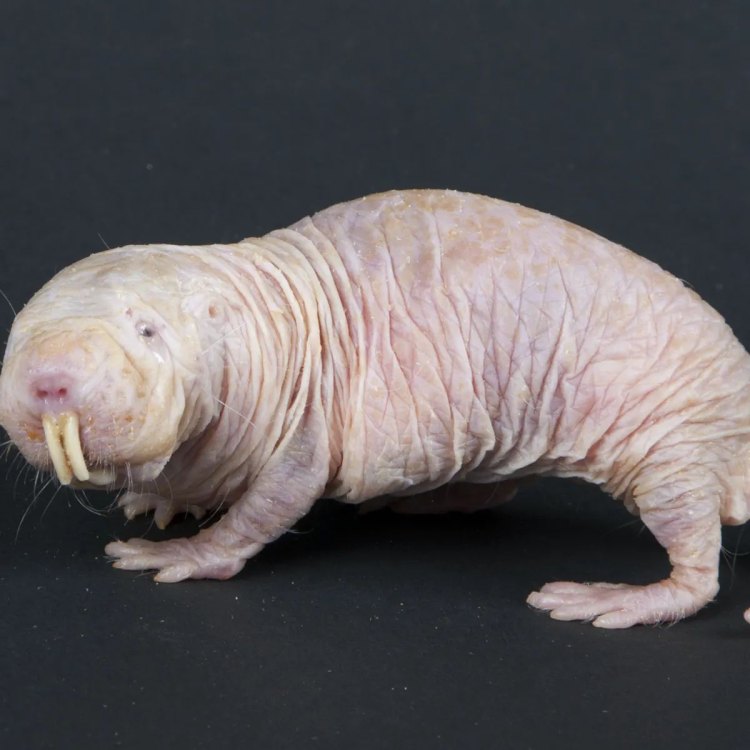
Naked Mole Rats: The Extraordinary Rodents of Eastern Africa
Disclaimer: The content provided is for informational purposes only. We cannot guarantee the accuracy of the information on this page 100%. All information provided here may change without prior notice.


